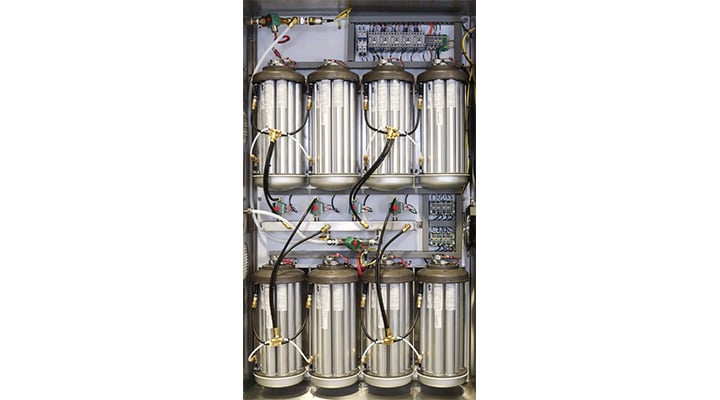Filter 0
Market
0Technology
0Ozone Production Minimum: grams/hr
0Ozone Production Maximum: grams/hr
0
Pacific Ozone® G Series Ozone Generator Systems
Pacific Ozone® G Ozone Generators are compact and rugged, air-cooled ozone gas generators. They provide safe and sustainable solutions to disinfection processes, yielding measurable results that can give customers operational peace of mind.

Pacific Ozone® MG Series Ozone Generators
The advanced air-cooled design of the Pacific Ozone® MG Ozone Generator delivers large ozone production of up to 1.1kg/hr (60lb/ day). They provide safe and sustainable solutions to disinfection processes, yielding measurable results that can give customers operational peace of mind.

Pacific Ozone® GS Series Ozone Generator Systems
The GS combines the performance of G Series Ozone Generators with an onboard oxygen concentrator fully integrated into the robust stainless steel enclosure. They provide safe and sustainable solutions to disinfection processes, yielding measurable results that can give customers operational peace of mind.

Pacific Ozone® PGS Series Packaged Ozone Generators System
Compact Packaged Ozone System designed for quick and seamless integration into water or disinfection processes. Ozone production and delivery ranges from 18g/h to 70g/h and includes integrated oxygen concentrators. They provide safe and sustainable solutions to disinfection processes, yielding measurable results that can give customers operational peace of mind.

Pacific Ozone® PGS Peak Ozone Generators
The PGS Peak series Packaged Ozone Systems provide flexibility integrate into industrial disinfection processes. Ozone production and delivery ranges from 18g/h to 1120g/h and are available with integrated feed gas systems. They provide safe and sustainable solutions to disinfection processes, yielding measurable results that can give customers operational peace of mind.

Pacific Ozone® PC Series Portable Cart
The PC Series is a 36g/h portable ozone water cart that provides dissolved ozone wherever it is needed for diverse on-site applications. The PC Series is ideal for sanitizing surfaces in food and beverage and industrial applications. They provide safe and sustainable solutions to disinfection processes, yielding measurable results that can give customers operational peace of mind.

Ozone Controls & Instruments
UL-508A Control Panels, instruments to measure dissolved ozone (DO3), ozone gas and safety detectors (AO3)

Ozone Accessories & Components
Ancilliary items for ozone generators, packaged systems and industrial ozone processes.

Ozone Feed Gas
Feed gas systems (oxygen concentrators and air dryers) for corona discharge ozone generators and generating systems.

Ozone SAM Test Kits
Simple snap-and-read test kits for ozone measurement
